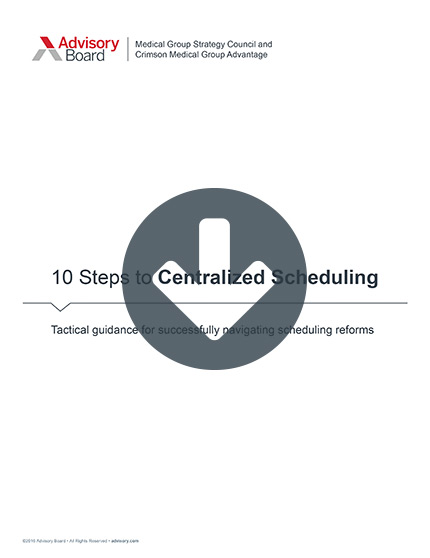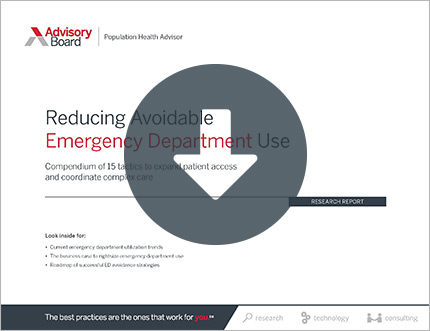Auto logout in seconds.
Continue LogoutTo help patients keep their appointments, Elmont Teaching Health Center implemented four interventions—and cut patient no-shows by 34%, according to a study in the Journal of the American Osteopathic Association.
Are last minute no-shows killing your practice?
According to FierceHealthcare, research shows that patients who miss their appointments are a perennial issue for providers, with no-show rates at outpatient facilities ranging between 23.1% and 33.6%. These no-shows lower efficiency, result in a higher use of resources, and cause waiting room delays, among other forms of lost time, research shows.
Study findings
According to FierceHealthcare, Elmont found that no-shows typically fell into one of three categories:
- Those who forgot they had an appointment;
- Those whose work obligations conflicted with their appointment; and
- Those who couldn't contact anyone at the center, or leave a voicemail, to reschedule.
To address those problems, Elmont implemented four interventions between October 2015 and December 2015 aimed at "address[ing] every roadblock that kept a patient from receiving care."
1. Educate patients on why showing up is important
For the first intervention, Peter Guiney, a doctor from Elmont and chair of the department of family medicine at Nassau University Medical Center, said the clinic educated patients on the clinical benefits of keeping their appointments. For instance, diabetic patients were taught why getting their sugar levels checked was important, as well as the potential consequences—lost eyesight, potential amputations—if they did not maintain their health.
The clinic also revised its calling practices, ensuring every patient received an appointment reminder phone call one day before their scheduled visit by having the practice manager and front desk staff verify such calls, and having family medicine residents follow up with no-show patients two days after their missed appointment. In addition, the clinic educated patients at nearly every point of contact about how to cancel or reschedule their appointments if needed. For instance, the clinic included such information in the reminder and follow up phone calls and detailed the information on multi-lingual signs at the clinic.
2. Answer every call and prioritize accessibility
To ease the difficulty of getting through to the clinic, Elmont reconfigured their call system so that all incoming calls ring on every front desk phone. Staff are encouraged to answer any phone, not just the one to which they are assigned.
Elmont also made sure a person responds to each call, rather than an automated messaging service. "We felt given the stakes we need to have a dedicated person that just picks up the phone and directs the call," said Guiney.
3. Increase staff awareness
To facilitate staff buy-in and keep everyone up-to-date on no-shows, the clinic distributed weekly reports on no-show rates to all staff members. According to FierceHealthcare, the practice kept the issue at the forefront of everyone's mind, and helped spotlight declining no-show rates.
4. Specialized approaches for each specialty
Lastly, the clinic also accommodated the demands of different specialties in its approach toward no-shows, according to the study. For instance, the clinic took advantage of no-show schedule gaps to make last-minute appointments for patients seeking behavioral health care services, as such patients may have more crisis-oriented needs than those seeking other types of care, FierceHealthcare reports.
Results
Overall, the clinic cut its no-show rate by 34%, with no-show rates declining from 18.2% in the quarter before the interventions were implemented to 15.3% in the post-implementation quarter.
Guiney added that he believes any hospital can implement the strategies that Elmont did to reduce no-shows. "We felt if it works here, it can work anywhere," he said (Finnegan, FierceHealthcare, 2/15; Mehra et al., Journal of the American Osteopathic Association, February 2018).
Struggling with no-shows? Speak with our medical group experts.
Health systems prosper when physicians are empowered as leaders and partners, working collectively to achieve a common vision. That’s why we work side-by-side with physicians and corporate leadership to design and operationalize better systems and stronger brands.
Connect with our medical group experts to learn how we can help your organization address no-shows and late cancellations.
Don't miss out on the latest Advisory Board insights
Create your free account to access 1 resource, including the latest research and webinars.
Want access without creating an account?
You have 1 free members-only resource remaining this month.
1 free members-only resources remaining
1 free members-only resources remaining
You've reached your limit of free insights
Become a member to access all of Advisory Board's resources, events, and experts
Never miss out on the latest innovative health care content tailored to you.
Benefits include:
You've reached your limit of free insights
Become a member to access all of Advisory Board's resources, events, and experts
Never miss out on the latest innovative health care content tailored to you.
Benefits include:
This content is available through your Curated Research partnership with Advisory Board. Click on ‘view this resource’ to read the full piece
Email ask@advisory.com to learn more
Click on ‘Become a Member’ to learn about the benefits of a Full-Access partnership with Advisory Board
Never miss out on the latest innovative health care content tailored to you.
Benefits Include:
This is for members only. Learn more.
Click on ‘Become a Member’ to learn about the benefits of a Full-Access partnership with Advisory Board
Never miss out on the latest innovative health care content tailored to you.


